Dr Vino's wine blog
wine talk that goes down easy
Say champagne, mean Champagne
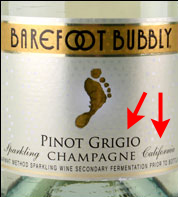 Almost half of the sparkling wine sold in the US says champagne on the label. The only catch: that’s “California champagne,” usually with the “California” in 2-point font and the “Champagne” in 36-point bold.
Almost half of the sparkling wine sold in the US says champagne on the label. The only catch: that’s “California champagne,” usually with the “California” in 2-point font and the “Champagne” in 36-point bold.
So says the Champagne Bureau USA, the DC-based arm of the CIVC, the Champagne trade association. Although the term is banned in Mexico and Australia for domestic sparkling wine, and Canada will phase out the use of any domestic use of “Champagne” in 2014, the US–the third largest market for Champagne after France and the UK–has no such sunset. Six years ago, the EU and US agreed to allow no new labels to use the term thus limiting the term to existing labels (about 16 comprise almost all the volume). Sam Heitner, director of the Champagne Bureau, thinks it’s time to tighten the laws and ban “California Champagne” on labels.
“US law agrees with protecting communal names such as Napa Valley,” he says. “Yet it permits duplicity with Champagne.” Read more…
CONTAINS SULFITES: meant to frighten rather than inform
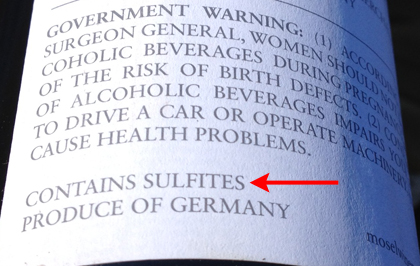
Have you ever wondered why a bottle of wine states “CONTAINS SULFITES” on the label while other foods that have sulfur get no such warning?
In A History of Wine In America, Volume 2, Thomas Pinney recaps some of the maneuvering from the 1980s that led to this warning. A group tried to have ingredients listed on wine labels as early as 1972. After over a decade of ping-ponging between agencies, proposals getting rebuffed from the industry, and ultimately a legal challenge that succeeded in striking it down, ingredient labeling was off the table.
But the forces of “neoprohibitionism” had started gathering steam and in Senator Strom Thurmond, they found their man. This time, Pinney writes, “their goal was not to inform but to frighten.” Initial efforts to get a government warning were stymied, but they scored a victory in getting “CONTAINS SULFITES” to appear on labels starting in 1987. The following year, the government warning language on labels also passed and went into effect. While a small portion of the population is allergic to sulfites, an allergist once told me that those who are allergic generally have preconditions, such as asthma. Further, the reactions are most often severe and may include anaphylaxis (note: they don’t cause headaches).
So if you’ve ever wondered why dried fruits that have higher levels of sulfur than wine contain no government warning, know you know why. First, they’re regulated by different agencies (TTB vs FDA). Second, there’s no anti-dried fruit lobby.
As the topic of ingredient labeling for wine is making the rounds again, its worth bearing in mind that the track record of “contains sulfites” verbiage on labels has raised more questions than it has answered and perhaps, as its original proponents intended, scared more people away from wine than it has protected asthamatics.
Bordeaux says no to American “chateaux”
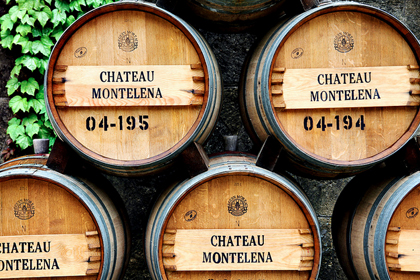
Could sales of Chateau Buffalo spread like wildfire in wine shops on the banks of the Seine, elbowing French wine from consumers’ shopping baskets? That’s what a trade group from Bordeaux fears.
The EU is considering a proposal to allow American wines to export to Europe using the name “chateau.” In France, to have “chateau” on the label means that the wine must be 100% estate fruit whereas in the US, fruit can be purchased from other growers and the wine is not forcibly an estate wine. Laurent Gapenne, head of a Bordelais trade organization that protects appellations, hit the media, telling Le Parisien that he thought allowing the term would be the thin edge of the wedge. “There is a great danger that the notion of the chateau will disappear in France … the consumer is going to feel lost,” the Telegraph translated his remarks.
Really? A bit of history: the 2005 US-EU bilateral wine accord allowed US wineries to use “semi-generic” names, such as chateau, but the US agreed to prevent further issuance of the word chateau in winery names (all trade law experts out there, feel free to chime in if I’m remembering wrong). Then, in 2008, the EU prohibited the importation of US wines with “chateau” in the name (has the WTO weighed in on this?). If my recollection of the 2005 accord is correct, then we are left with fewer than 60 wines that could use the term. Like Chateau Buffalo. Or Chateau Manzanita. (Enjoy the full list after the jump.) Could French consumers really mistake these as French? I’m all for specificity, but do they know the terroir of Buffalo or even California well enough to discern estate wine from negoce wine from those regions?
And then there’s the issue of our exports to France. Half of all our exports are in containers greater than two liters. So that’s probably not estate wine nor would it be confused as such. In 2010, the US exported $441 million of wine to the EU and less than $16 million of that was to France. Even Gallo tried to target the French market a while back and found it a tough nut to crack. Coals to Newcastle and all that.
Thus Gapenne is swinging at shadows. He shouldn’t fight to preserve chateau as synonymous with an estate wine for American wine; the 2005 accord recognized the use of chateau. He should, however, fight to have estate wines from American “chateaus” labeled as such, regardless of the name on the label. It’s hard to argue against more precise labeling, in any language.
American Trousseau back on the table
Eric Asimov writes his column today (though it was posted online last week) about the tiny amount of Trousseau production in California focusing on Arnot-Roberts and a few others. I tried the wine last summer when I visited the winery and tweeted about it. Bryan Garcia raised the question of price, wondering if it was worth it when it cost more than the wines of the “Jura masters.”
A post here from last year generated interesting discussion around the question of relative value and whether if you’re a Trousseau lover, you feel obliged to support domestic efforts. Sam Herron commented then, “no I do not think I have any obligation to buy domestic wines, well priced or not…I wanted to jump on the Arnot-Roberts bandwagon after your posts because they excited me, but their prices are just too much.” Bob said, “I agree wholeheartedly with Sam. That being said, today I bought a Dolcetto from Bonny Doon for $20. I don’t even pay that much for an Italian Dolcetto.”
Uff the fluff opined: “For American wines one has to simply ignore QPR – sad, but true.” Evan Dawson said “No obligation. As a consumer, though, you’re limiting yourself if you don’t acquire a strong knowledge of what is available locally.”
Since Asimov didn’t address the question of value or who is buying it beyond a handful of winemakers, consider this a corollary and a chance to join the discussion from last year. What do you think–who’s buying domestic Trousseau? Would (relative) price drive your decision to do so, or your desire to support something domestic that’s different?
Liver battle: French politician says “non” to California wine
California banned the sale and production of foie grasas of July 1. Now, a politician in the heart of a foie gras-producing region of France is hitting back: by calling for a boycott of California wine…Ooh, that will bring the industry to its knees!!
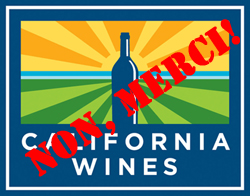 As silly as it is to boycott foreign coal in Newcastle, as it were, this is the first time that I recall American wine as the object of a foreign boycott. Sure, whenever diplomatic feathers are ruffled between France and the US, such as the 2003 showdown in the UN, French wine gets dumped down drains in protest. But when foreigners object to US policies, they usually boycott our larger consumer brands, such as Coca Cola or McDonald’s. So this ignominy is a historic first even if it has no economic impact.
As silly as it is to boycott foreign coal in Newcastle, as it were, this is the first time that I recall American wine as the object of a foreign boycott. Sure, whenever diplomatic feathers are ruffled between France and the US, such as the 2003 showdown in the UN, French wine gets dumped down drains in protest. But when foreigners object to US policies, they usually boycott our larger consumer brands, such as Coca Cola or McDonald’s. So this ignominy is a historic first even if it has no economic impact.
Good thing the politician didn’t call to action another California industry that his constituents might have, er, found a little more difficult to swallow: boycotting Hollywood movies.
Related: “San Francisco Restaurant Claims It Can Serve Foie” -HuffPo
My visit to a foie gras farm
Screaming Eagle sauvignon blanc fetches $2,500 a bottle
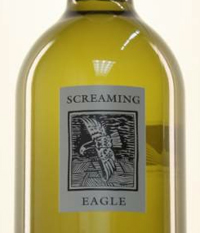 Screaming Eagle, the Napa winery known for its cabernet sauvignon that fetches high prices, has released six hundred bottles of sauvignon blanc. Offered to “active members” on its mailing list for $250 a bottle, the offer came with the condition that they not resell it. In 2006, Stan Kroenke, owner of Arsenal and the Denver Nuggets and spouse of Ann Walton Kroenke, purchased Screaming Eagle and replanted some of the vineyards, including some sauvignon blanc.
Screaming Eagle, the Napa winery known for its cabernet sauvignon that fetches high prices, has released six hundred bottles of sauvignon blanc. Offered to “active members” on its mailing list for $250 a bottle, the offer came with the condition that they not resell it. In 2006, Stan Kroenke, owner of Arsenal and the Denver Nuggets and spouse of Ann Walton Kroenke, purchased Screaming Eagle and replanted some of the vineyards, including some sauvignon blanc.
Six of the bottles have found their way to auction, where the lot closed with a winning bid of $13,000. To whomever paid over $2,500 a bottle (including the 19.5% buyer’s premium), I say…well, YOU finish the sentence in the comments!
Jam is for toast…and points are for basketball
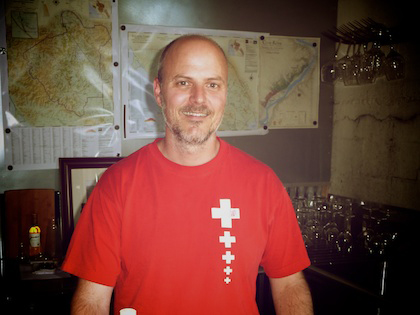
Alice Feiring has a piece on thedailybeast.com entitled “Big? Jammy? Not Anymore!” about the much-discussed turn in California winemaking toward lower-alcohol, higher-acidity wines. While she rightfully highlights a merry band of winemakers daring to be different, including Nathan Roberts (above) of Arnot-Roberts, she neglects to mention just how hard that alternate path is from a sales perspective. For decades, the basic sales model of California wine has been to make a wine, get a high score, then use that score to sell the wine through a distributor or a mailing list.
These nouvelle vague producers in the Sierra foothills and the outer reaches of Sonoma are not point chasers, by and large. Instead, they have emphasized the food-friendliness of this style of wine, cultivating relationships with sommeliers and using plum placements on restaurant wine lists to serve as a proxy for quality. They have gotten into key wine shops too and have a lot of buzz on them there Internets. Forging a new sales model is both risky and hard work. But it could be an even more important development for the American wine industry than the stylistic change.
The wealthy and their vineyards
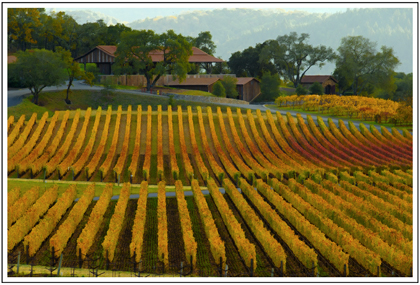
BREAKING: it takes a long time and lots of money to make a profit in winemaking. But it’s cool to look at the view and have a glass of your own wine in the vineyards with your adult children.
Oh, and it turns out that it’s hard to get distribution and selling wine can be a lot harder than making it. And constructing a wine to get a 100-point score is risky. But if you hold one for a generation or two, you could make $50 million or even $500 million. These are some items in a “Wealth Matters” column in the NYT over the holiday weekend.
Of course, if you really want to make money from year one in the wine biz, do as Warren Buffett did and buy a wine and spirits distributor.
The story does provide some color to our previous discussions about how high costs, a search for ROI, and an aspirational product/lifestyle explain in part why there are so few tasty domestic wines under $15. Also, it was fun to learn that Jim Laube got a wine from a vintner via their mutual golf pro and then gave that wine 97 points. Fore!



